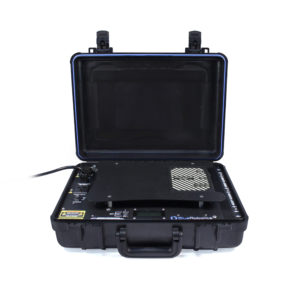Friends! What’s better than a BlueROV2? A BlueROV2 that can run indefinitely! We are so ecstatic to announce today’s newest addition to the Blue Robotics product line – introducing the Outland Technology Power Supply for the BlueROV2! Check out the launch video below and read on for all the details! But first, watt is so great about power over tether?
[youtube https://www.youtube.com/watch?v=UjqgvHLhB8Q&t=1s &w=560&h=315]Blue Robotics X Outland Technology
Our friends at Outland Technology have been working in the subsea technology industry for over 35 years (!) and we could not resist a collaboration when the opportunity arose. It’s been super fun to work together on this product and we can’t wait to see what future ideas spark from this partnership!

Early testing of OTPS.
Topside Power v. Batteries
Batteries are awesome for lots of reasons – they are (somewhat) portable, are rechargeable, and they can be cost-effective. But we think it’s safe to say that batteries can cause their fair share of headaches as well! Larger batteries (like ours) are difficult to ship worldwide, can be confiscated at any airport regardless of attempted compliance (RIP to all the ones we’ve lost), and of course, they eventually run out of juice. Batteries are perfect for missions where the dive time is short and the location is close by, but for applications such as aquafarm inspections, continuous power is a necessity.

A BlueROV2 inspecting an aquafarm. Photo credit: Jeff Milisen
The Outland Technology Power Supply
The Outland Technology Power Supply (OTPS) is a high-voltage power supply system that allows the BlueROV2 to be powered through the tether, allowing it to operate indefinitely and eliminating the need for batteries! It’s designed with safety as the highest priority and comes with everything needed to retrofit your BlueROV2! The system is comprised of three components: the topside power supply unit, the ROV enclosure, and the tether, which can be purchased in 125m and 250m lengths.
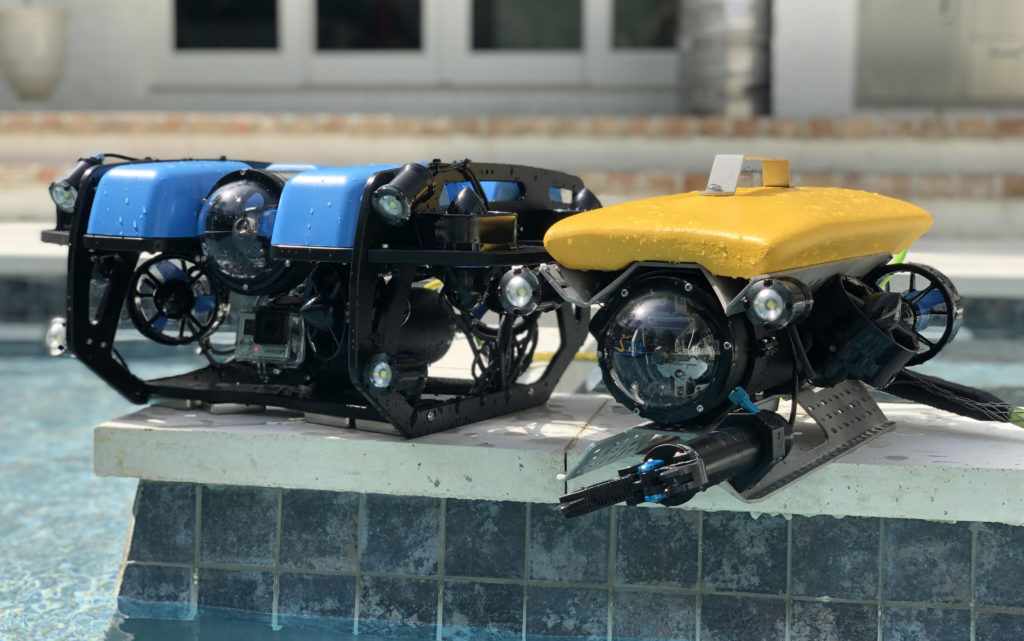
The BlueROV2 and the Outland ROV-500.
How it Works
The challenge with powering any ROV from the surface is the electrical power loss through the tether. A long tether with small wires, like that used on most ROVs, has an electrical resistance that causes a voltage drop proportional to the amount of electrical current passing through the wires. The best way to overcome this challenge is to transfer the power at a high voltage and low current, minimizing power losses. The OTPS does exactly this by converting normal household power (100-240 VAC) to 400 volts DC to transfer through the tether. Once it reaches the ROV, the 400 volt power is converted down to the 15 volts needed to power the ROV.
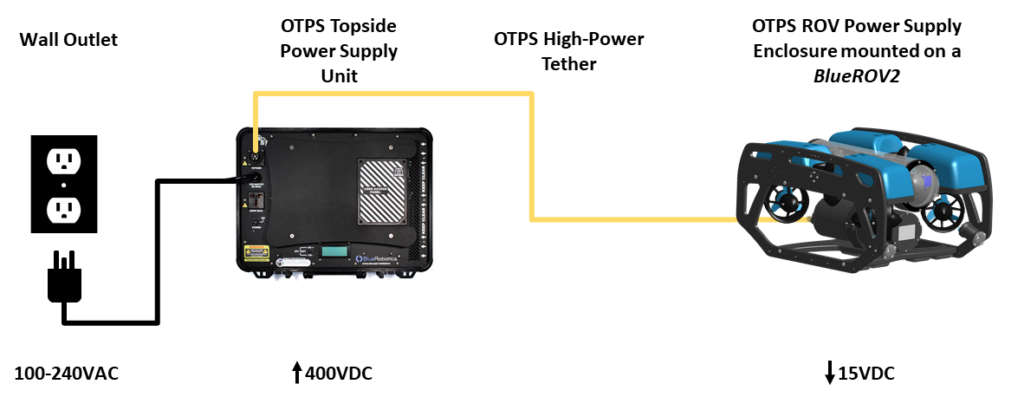
The Components
The Topside Power Supply Unit is built into a compact and easily transported hardshell case. Inside it has a high-voltage power supply, a built-in Fathom-X Tether Interface board, and a ground fault interrupter (GFI) for safety. It’s meant to be operated with the lid open for cooling and has a built-in laptop shelf that minimizes the table space needed to operate the ROV.
On the ROV, the battery enclosure is replaced with the ROV Power Supply Enclosure, which contains a power supply that converts the 400 volt power down to the 15 volts needed by the ROV. It comes with a pre-installed power cable and a tether signal cable with penetrators, making it a drop-in replacement for the original battery tube. The enclosure is equipped with two wet-mateable electrical connectors that allow the ROV to be connected and disconnected from the tether cable.
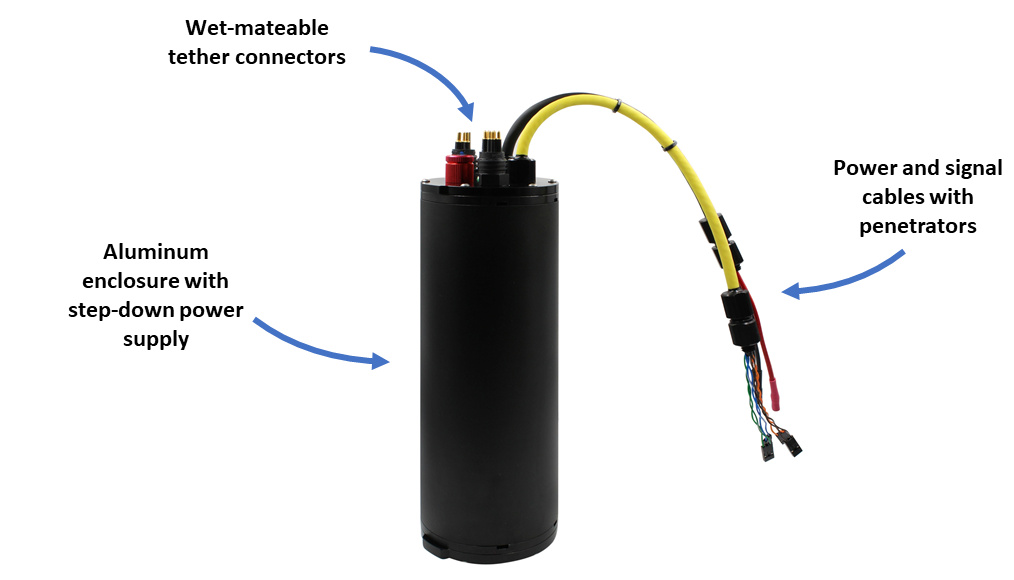
The High-Power Tether Cable is specially designed for this application and has five twisted pairs of varying sizes for each function. Two 23 AWG pairs are used for the primary isolated power transmission while a 24 AWG pair is used for a solid connection to the earth ground to help detect any safety faults. One 26 AWG pair is used for the primary Fathom-X communication and another is available for auxiliary devices such as the Water Linked Analog Locator.
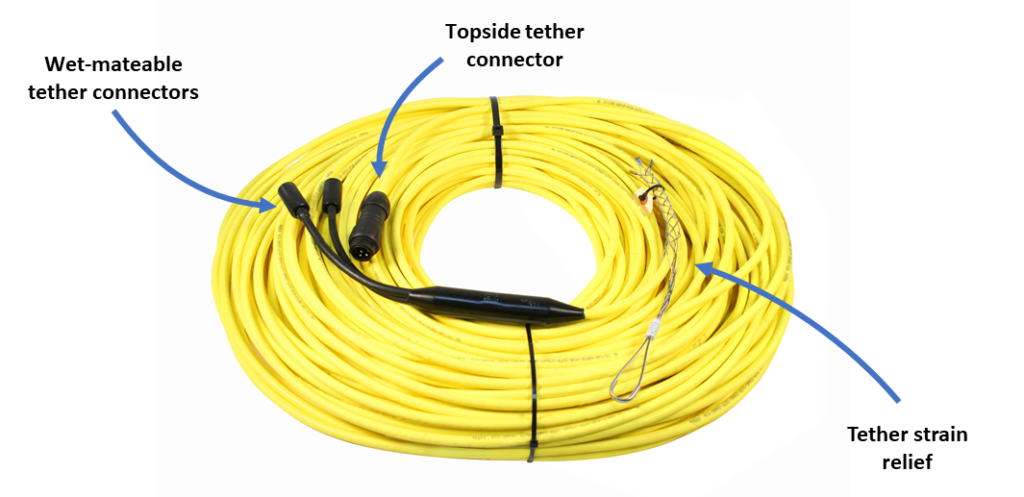
Safety First!
The entire OTPS system is built with detailed attention to safety. That includes the use of tamper-resistant fasteners, appropriately rated electrical connectors, and clear safety markings. Regardless, it’s still a high-voltage device and every caution should be taken by the user to use it safely. We strongly recommend getting familiar with the user manual before getting started with the OTPS!
That’s all we have for today! Where would dive if you had unlimited run time?! The possibilities are infinite!



